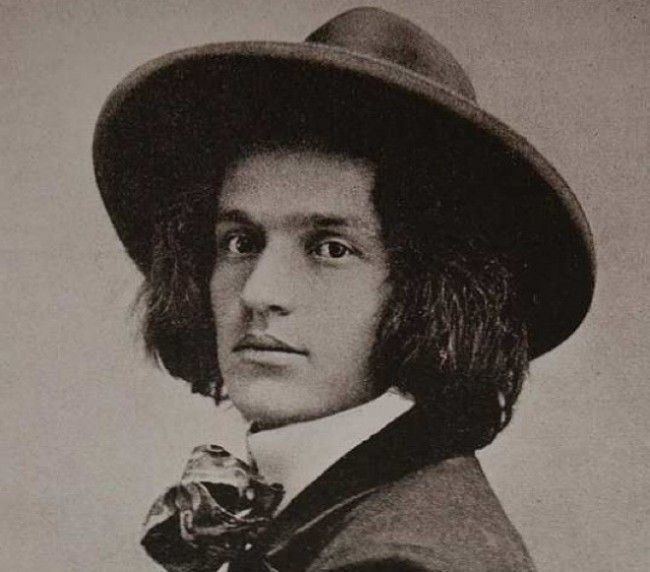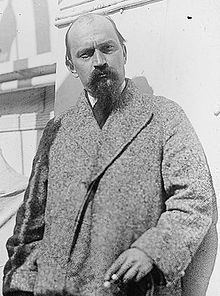Nationality Croatian/American | ||
 | ||
Born 15 August 1883 ( 1883-08-15 ) Known for Sculpture, Architecture Notable work Victor (monument)The Bowman and The SpearmanGregory of Nin statueMonument to the Unknown Hero Spouse Ruža Klein (m. 1904), Olga Kesterčanek (m. ?–1962) Children Mate Meštrović, Maria Meštrović, Marta Meštrović, Tvrtko Meštrović Artwork The Spring of Life, History of the Croats, The Bowman and The, Monument of Gratitude to France, St Jerome the Priest Similar Gregory of Nin, Mate Meštrović, Antun Augustinčić, Marko Marulić, Ivan Kožarić | ||
Sculptures atelier ivan me trovi zagreb
Ivan Meštrović ([ǐʋan mɛ̂ʃtrɔʋit͡ɕ]; 15 August 1883 – 16 January 1962) was a renowned Croatian sculptor and architect of the 20th century. After the end of World War II, unwilling to live under Communism, he relocated to the United States and became a naturalized citizen.
Contents
- Sculptures atelier ivan me trovi zagreb
- Ivan me trovi
- Early life
- During World War I and II
- Death and legacy
- Work
- Written works
- References

Ivan me trovi
Early life

He was born in the village of Vrpolje, Croatia. He spent his childhood in Otavice, a small village in Dalmatia. At the age of sixteen, a master stone cutter from Split, Pavle Bilinić, noticed his talent and he took him as an apprentice.

His artistic skills were improved by studying the monumental buildings in the city and his education at the hands of Bilinić's wife, who was a high-school teacher. Soon, they found a mine owner from Vienna who paid for Meštrović to move there and be admitted to the Academy of Fine Arts where he studies under Edmund von Hellmer and Otto Wagner. He had to quickly learn German from scratch and adjust to the new environment, but he persevered and successfully finished his studies.

In 1905 he made his first exhibit with the Secession Group in Vienna, noticeably influenced with the Art Nouveau style. His work quickly became popular, even with the likes of Auguste Rodin who once said that Meštrović is the greatest phenomenon among sculptors and even greater sculptor than he was. Because of that popularity he soon earned enough for him and his wife (since 1904), Ruža Klein, to travel to more international exhibitions.
During World War I and II
In 1908 Meštrović moved to Paris and the sculptures made in this period earned him international reputation. in this time, Ivan was friend of the cubist painter Jelena Dorotka (Helene Dorotka von Ehrenwall). In 1911 he moved to Zagreb, and soon after to Rome where he received the grand prix for the Serbian Pavilion on the 1911 Rome International Exhibition. There his work was praised as being strong and monumental compared to the "soft and ineffectual" pieces exhibited by his contemporaries, Hugo Lederer, Anton Hanak, and Franz Metzner. He remained in Rome to spend four years studying ancient Greek sculpture.
At the onset of World War I, after the assassination in Sarajevo, Meštrović tried to move back to Split via Venice, but was dissuaded by threats made because of his political opposition to the Austro-Hungarian authorities. During the war he also travelled to make exhibits in Paris, Cannes, London and in Switzerland. He was one of the members of the Yugoslav Committee.
He was the first artist of Croatian origin to exhibit his work at the Victoria & Albert Museum in London, in 1915.
After World War I he moved back home to the newly formed Kingdom of Serbs, Croats and Slovenes and met the second love of his life, Olga Kesterčanek, whom he married shortly after. They had four children: Marta, Tvrtko, Maria and Mate, all of who were born in Zagreb, where they settled in 1922. He was a contemporary and friend of Nikola Tesla. Meštrović and family would later spend the winter months in their mansion in Zagreb and the summer months in a summer house he built by the end of the 1930s in Split. He became a professor and later the director of the Art Institute in Zagreb, and proceeded to build numerous internationally renowned works as well as many donated chapels and churches and grants to art students.
By 1923 he designed the mausoleum for the Račić Family Memorial Chapel at Cavtat, also known as Our Lady of the Angels and he also created a set of statues for a never-built Yugoslav national temple that would be erected in Kosovo to commemorate the battle that happened there in 1389.
He continued to travel to post his exhibits around the world: he displayed at the Brooklyn Museum in New York in 1924, in Chicago in 1925, he even traveled to Egypt and Palestine in 1927. In 1927 he entered a design for the coins of the Irish Free State, and though his design arrived too late for consideration it was adopted in 1965 as the seal of the Central Bank of Ireland.
During the April War in 1941 Meštrović was living in Split. After being warned by novelist and Independent State of Croatia (NDH) minister Mile Budak that the Croatian authorities could not guarantee his safety in Split, he moved to Zagreb in September 1941. Meštrović and painter Jozo Kljaković were arrested by the Ustaše in Zagreb on 7 November 1941, ostensibly due to the regime's fears that the two would emigrate. He eventually served three and a half months in the Savska Cesta prison. With help from archbishop Aloysius Stepinac and subsequently the Vatican he was released, on condition that he travel to Venice to attend the Independent State of Croatia pavilion at the Venice Biennale. From there he relocated to Rome, where he stayed and worked at the Pontifical Croatian College of St. Jerome. He was sponsored here by Fra Dominik Mandić, and during his time in the city was received by Pope Pius XII. In July 1943, Meštrović secured a visa to Switzerland through NDH diplomat Stijepo Perić and moved there. Not all of his family managed to escape — his first wife Ruža died in 1942 and many from her Jewish family were murdered in the Holocaust. Later, his brother Petar was imprisoned by the Communists for publicly advising Ivan not to return to the country. Marshal Josip Broz Tito's government in Yugoslavia eventually invited Meštrović back, but he refused. In 1946, Syracuse University offered him a professorship, and he moved to the United States. He was the first artist of Croatian origin to exhibit his work at the Metropolitan Museum of Art in New York City in 1947.
From 1951 he began making contributions to the Croatian emigrant journal Hrvatska revija, which would later publish his memoirs. He was awarded the American Academy of Arts and Letters' Gold Medal for sculpture in 1953. President Dwight D. Eisenhower personally presided over the 1954 ceremony granting Meštrović American citizenship. He went on to become a professor at the University of Notre Dame in 1955.
At the end of January 1951 Meštrović joined the American campaign for the release of Archbishop Stepinac from prison.
Death and legacy
Before he died, Meštrović returned to Yugoslavia one last time to visit with the imprisoned Cardinal Stepinac and with Tito. At the request of various people from his homeland he sent 59 statues from the United States to Yugoslavia (including the monument of Njegoš), and in 1952 signed off his Croatian estates to the people of Croatia, including more than 400 sculptures and numerous drawings. Upon his return he vowed to his colleague painter Jozo Kljaković that he would not return to the country as long as the communists were in power.
Two of his children predeceased him. His daughter Marta, who moved with him to the U.S., died in 1949 at the age of 24, "in the best years of her life." His son Tvrtko, who remained in Zagreb, was 39 when he died in 1961.
In 1960 he suffered a minor stroke which affected his eyesight. In 1961, his memoir, Uspomene na političke ljude i događaje, was published by the Croatian emigrant publishing house Hrvatska revija (Croatian Review) in Buenos Aires, Argentina. In 1969, they were published by Matica hrvatska in Zagreb.
After creating four clay sculptures to memorialize his children, Meštrović died in early 1962 aged 79, in South Bend, Indiana. His funeral Mass was concelebrated by the bishops of Šibenik, Josip Arnerić, and bishop of Split-Makarska Frane Franić. His remains were interred at a mausoleum in his childhood home of Otavice. Communist Yugoslav authorities had originally promised the Meštrović family that his remains could lie in repose at the cathedrals in Zagreb and Split. Once his remains had arrived in Yugoslavia the authorities reneged and did not allow this to take place. After communist officials interfered during the funeral, his son Mate Meštrović sharply criticized the level of religious freedom in the country.
His son, Mate, is a Croatian-American diplomat, university professor and editor at Time Magazine, who served as a lieutenant in the US Army PsyWar. Later, he served as president of the Croatian National Congress and lobbied on behalf of Croatian self-determination in Washington, D.C., Western Europe and Australia, and was a deputy in the Croatian Parliament, a member of Croatia's delegation to the Council of Europe, and the Interparliamentary Union, and served as ambassador in the Foreign Ministry.
His grandson Stjepan is an American sociology professor at Texas A&M and author of several books.
Work
He created over fifty monuments during his two years in Paris (1908–1910). The theme of the Battle of Kosovo particularly moved him, prompting one of his first great works, the Paris Kosovo Monument, and other works in bronze and stone. A lot of his early work revolved around such epic moments from Slavic history in an attempt to foster the pan-Slavic cause in his native country.
With the creation of the first Yugoslavia, his focus shifted to more mundane topics such as musical instruments or chapels. He particularly oriented himself towards religious items, mostly made of wood, under artistic influence from the Byzantine and Gothic architecture. The most renowned works from the early period are the Crucifix and Madonna; later he became more impressed by Michelangelo Buonarroti and created a large number of stone reliefs and portraits. The Croatian dinar featured Meštrović's work History of the Croats.
His most famous monuments include:
Galleries including his work include:
